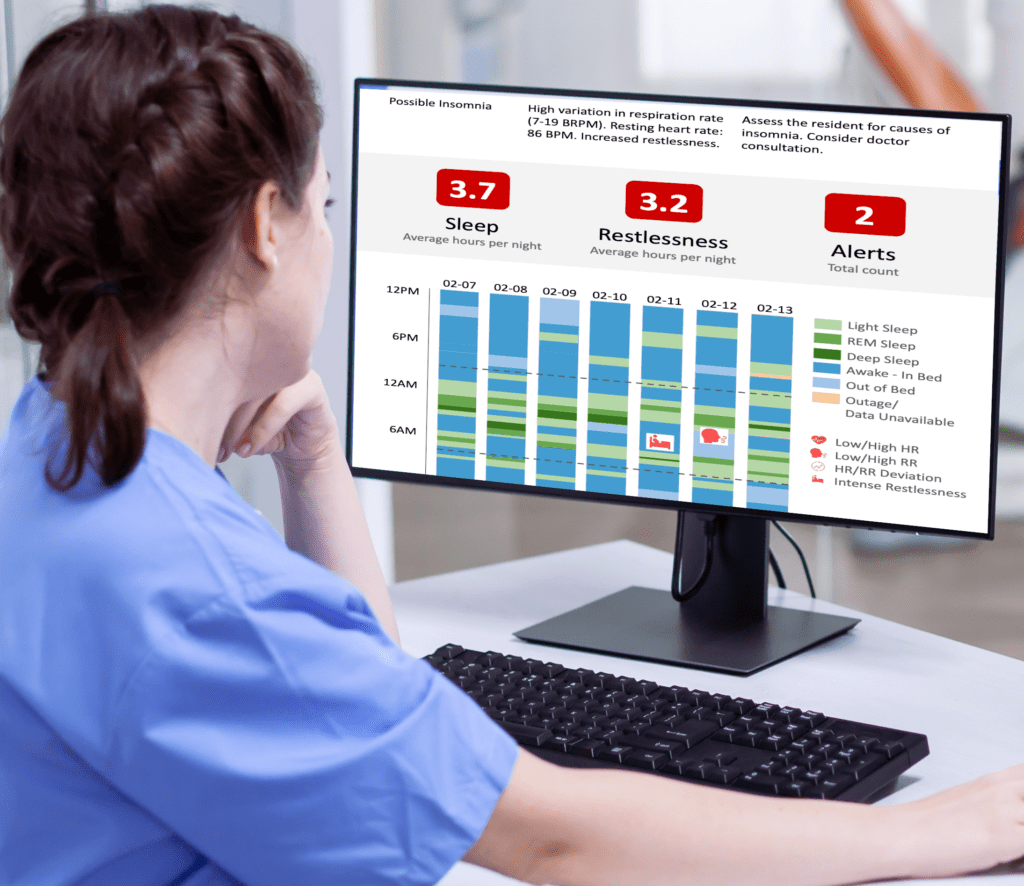From Rounds to Real Care: How Automated Monitoring can Improve Caregiving

It’s official: the world is aging, with about 71 million Baby boomers entering their golden years over the next decade. Unsurprisingly, the demand for quality care is skyrocketing. Caregiver shortages exacerbate the issue, leaving dedicated professionals stretched thin. This creates a double-edged sword for caregivers: the satisfaction of helping others and the crushing exhaustion of burnout. But what if there was a way to empower caregivers and deliver exceptional care, all while reducing burnout and staff turnover?
That’s one of our goals here at Caspar AI, where we’ve developed a unique patient monitoring platform that provides AI-driven insights on more than 20 health and wellness markers that does not depend on patient adherence. Unlike traditional methods that require manual intervention, our AI uses data gathered from discrete sensors placed strategically in a resident’s rooms. It then highlights issues based on heart & respiration rate data, sleep patterns, activity levels, restlessness scores, stress-to-relaxation ratio, recovery & resilience score, and bed exits – all of the critical information that care teams need to optimize care. The data is delivered in an actionable AI-driven Care Plan Report, accessible by care teams whenever they need it.
How Does Automated Monitoring Help?
Imagine a scenario where you’re caring for several residents, some with complex health needs. Constant check-ups disrupt sleep patterns for both residents and staff. Automated monitoring frees you from the burden of hourly rounds, allowing residents to sleep soundly while you focus on higher-level care. And for those managing teams, the compiled longitudinal data allows them to better plan for who needs care and when, and then staff their teams accordingly.
With Caspar’s continuous health monitoring, caregivers now have access to a tool that can help them excel at their job – and feel great while they’re doing it. The tool offers numerous benefits, including:
- Focus on Quality Care with Actionable Reports: The AI-driven Care Plan Report provides care managers with a weekly snapshot, giving them a comprehensive, whole-person view of the patient. This allows better care planning for managers, and caregivers can better prioritize care based on actual needs. Caregivers can then spend more time providing personalized attention and emotional support, the aspects of care that truly matter.
- More Impact, Fewer Rounds: Thanks to continuous, longitudinal data, the system can flag subtle changes in behaviors and vital signs, which are often missed during routine rounds. This allows for early intervention and potentially prevents complications, freeing caregivers from the stress of reactive care.
- Better Outcomes Boosts Caregivers Motivation: Early detection and proactive care lead to better health outcomes, which is rewarding for caregivers and helpful for residents. This in turn boosts morale, which reduces overwhelm.
- More Time for Balance: Automated monitoring frees up valuable time previously spent on routine checks. This allows for much-needed breaks, which are one of many things that can help prevent burnout for caregivers. A well-rested and empowered caregiver also happens to be more confident, attentive, and productive – which is good for everyone.
Is AI-Driven Care Planning the Future of Caregiving?
We think so! In a world facing an ever-growing need for quality resident care, providing the right tools to caregivers is a critical piece to the puzzle when it comes to reducing burnout and keeping folks on the job in a positive way. As the technology evolves, we hope to see even more sophisticated tools that further personalize care and create a win-win situation for both residents and the dedicated professionals who care for them.
